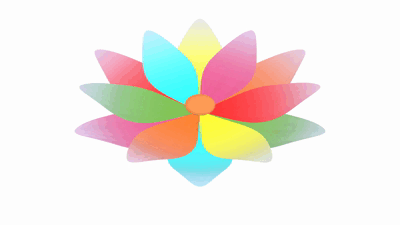Welcome, to Health & Wellbeing Magazine’s Spirit Keeper monthly column. We are one year old! This is the place where you will discover tips and practices for creating, developing and maintaining a personalised self-care practice.
As we move into the 2nd year of this column, I would like to expand upon different exercises (rituals) which are spirit centred, mind centred and body centred. Each month will also come with a monthly challenge. The idea is to prove to yourself and your own clients’ the power of specific exercises (rituals) in integrating mind, body and spirit. After all, in order for there to be change within the world, we need to be the ones who are embodying it and grounding it.
In this month’s column we will be focusing on the spirit centred practice of contemplation.

Metaphorical Story Demonstrating the Power of Contemplation
In a land where the Stream of Life flowed ever onward, carrying all living things relentlessly downstream, there lived a young cartographer named Isaac. His soul task was to map the Stream of Life. To chart and know its currents, its hidden rocks, and its distant shores. But the Stream of Life appeared to be vast and turbulent, and Isaac often felt lost and overwhelmed by the speed and the sheer volume of experiences within the Stream of Life. He knew he was moving forward, but he rarely understood where he had been, or why certain eddies had pulled him in, or why some rapids had nearly capsized him. He was living life forwards, but understanding it backwards seemed an impossible feat.
One day, an old, wise ferryman, his face etched with the wisdom of countless journeys in the Stream of Life, saw his distress.
“Young one,” he said, his voice like the gentle lapping of water against the shore, “you cannot map the Stream of Life while you are being swept along by its strongest currents. You must find the Still Forest through which the Stream of Life flows.”
Isaac looked puzzled. “The Still Forest? Where is that?”
“It is not a place on any map you draw,” the ferryman replied, “but a state of being. It lies within the quiet spaces between your thoughts, beyond the clamour of the world.”
Intrigued, Isaac sought this elusive forest through meditation and contemplation. He began to pull his small boat to the calmer inlets along the riverbanks of the Stream of Life and away from the main current. At first, his mind raced, still caught in the momentum of the Stream of Life. His thoughts like distant shouts fuelling his worries of what lay ahead – all these distractions tugged at him. Isaac persisted, by closing his eyes, focusing on the gentle rhythm of his own breath and taking his brain waves down from beta to alpha. This was his first step into the Still Forest and the cultivation of mental focus.
As he practiced, the external noises of the Stream of Life began to fade, and even the internal chatter of his mind softened. A profound quiet settled upon him. In this stillness, his conscious awareness deepened. He noticed the subtle patterns of light filtering through the metaphorical canopy of the forest, the intricate weave of the moss on the ancient trees, the faint scent of damp earth. This deepened awareness, a state where the superficial layers of perception peeled away, revealed the intricate beauty and interconnectedness of everything. He was alone and yet part of something greater.
It was in this state, as his mind quieted further, that something remarkable happened. He felt a gentle hum, a resonant frequency within his own being. It was like a soft, steady pulse, unlike the frantic beat of the Stream of Life. This was the metaphorical equivalent of his alpha brain rhythms – a state of relaxed alertness, of open receptivity. In this space, the forest itself seemed to whisper secrets. Isaac found he could pose a question and the journal the answer. In his act of contemplating on meaning, lessons and possible actions he could take, it was here that inspiration began to flow, not as a sudden, blinding flash, but as a gentle, continuous stream of insight into knowing, loving, healing and freeing himself from those things within the Stream of Life which created constant overwhelm.
He no longer saw the Stream of Life just as a chaotic force, but as a grand tapestry and each player had a part. From the vantage point within the Still Forest, he could perceive the entire journey of the Stream of Life. The source high in the mountains, the winding paths it had taken, the tributaries that joined it, the obstacles it had overcome, and the vast ocean it eventually met. The seemingly random eddies and rapids now made sense; they were necessary turns and challenges which shaped the Stream of Life’s course. The hidden rocks he had once feared were merely part of the riverbed, providing structure.
In these moments of profound insight, Isaac understood. He saw that the past, though unchangeable, was not a series of disconnected events, but a narrative which led directly to his present moment in time. He could trace the currents that had brought him here, understanding the ‘why’ of his journey backwards. And with this understanding, he could now look forward. The future was still unknown, but he had gained a profound sense of direction, a wisdom that allowed him to anticipate the flow, to navigate with intention rather than just over-react. He learned to live life forwards, armed with the profound understanding gained by looking backwards from within the stillness found in the Still Forest.
When he returned to the Stream of Life, his own life journey, the currents were still strong, but Isaac was no longer lost. He carried the Still Forest within him, a sanctuary of focus, awareness, and alpha-inspired insight. He knew that whenever the Stream of Life threatened to overwhelm him, he could always retreat to that inner quiet place, to observe, question, seek answers, to learn and understand. Very simply, life needs to be lived forward and understood backwards. The ability to contemplate and question the experiences of life, enabled Isaac to find the answers to life’s challenges and to grow his skill set mentally and emotionally. Knowing his life had purpose and was part of the tapestry of life.

What is Contemplation?
Contemplation is a multifaceted mindfulness practice which involves deep, thoughtful, and often sustained reflection. While it can be understood in a general sense as a synonym for “pondering” or “studying,” it has a richer and more specific meaning, particularly in philosophical and religious contexts.
Here are the key aspects of contemplation:
- Focused Attention: At its core, contemplation is the act of focusing one’s attention on a specific object, idea, or concept. This focus is not fleeting but is held with a deliberate and sustained effort.
- Philosophical Roots: The concept of contemplation has ancient roots in philosophy. Greek thinkers like Plato and Aristotle saw it as the highest form of human activity, a way to gain knowledge of ultimate reality and the nature of things.
- Spiritual or Religious Context: In a religious context, contemplation often seeks a direct awareness or experience of the divine. It is a central practice in traditions like Christianity (where it’s often linked to mystical prayer) and Buddhism (as a form of meditation). The purpose of contemplation is to deepen one’s relationship with God and/or to achieve a state of union with a higher reality.
- Transcending the Intellect: In many spiritual traditions, contemplation is described as a form of “knowing beyond words.” It is a state of awareness which goes beyond logical analysis and intellectual reasoning. The goal is to gain a direct, intuitive understanding or experience of the subject.
Types of Contemplation:
Contemplation can take various forms, including:
- Artistic contemplation: Deeply appreciating and reflecting on the meaning of art, music, or literature.
- Personal contemplation: Introspective self-reflection on one’s own beliefs, values, and experiences.
- Philosophical contemplation: Reflecting on fundamental questions about life, existence, and ethics.
- Spiritual contemplation: Meditating on religious themes, the divine, or the soul.
What is the difference between Meditation & Contemplation?
While often used interchangeably, there is a subtle distinction. Meditation is often seen as a broader category of practices which are used to quieten the mind and cultivate present-moment awareness.
Contemplation, in some traditions, is a more focused, receptive practice which may follow meditation, where one is more open to receiving insights or a direct experience of the subject being contemplated.
In essence, contemplation is a deliberate act of receptive inner observation and investigation which goes beyond mere thinking to allow for a deeper, more holistic understanding of a subject, whether it’s a profound concept, a spiritual reality, or the beauty of the natural world.

What are the Physiological Benefits of Contemplation?
Contemplation, as a mindful practice, offers a wide range of physiological and mental-emotional benefits which are increasingly being supported by scientific research.
By quieting the mind and focusing attention, contemplation facilitates a deep state of rest that is restorative for both the body and the mind.
Physiological Benefits
- Enhanced Immunity: By reducing chronic stress, contemplation can indirectly improve immune function. Chronic stress has a suppressive effect on the immune system, and by mitigating this stress, contemplation helps the body’s natural defence function more effectively.
- Improved Brain Function: Neuroscientific studies have revealed that long-term contemplative practices can lead to structural and functional changes in the brain. This includes an increase in grey matter in areas associated with attention, emotional regulation, and memory. It also involves a decrease in activity in brain regions linked to stress and anxiety, such as the amygdala.
- Improved Sleep Quality: Contemplative practices promote a state of deep rest, which can help individuals fall asleep more easily and achieve a more restorative sleep.
- Lowered Blood Pressure: The calming effect of contemplation and its ability to activate the parasympathetic nervous system can lead to a reduction in blood pressure, which is a significant benefit for cardiovascular health.
- Stress Reduction: Contemplative practices have been shown to reduce the body’s stress response. They activate the parasympathetic nervous system, which is responsible for the “rest and digest” response, and decrease levels of the stress hormone cortisol.
Mental-Emotional Benefits
- Emotional Regulation: Contemplation trains the mind to observe emotions without becoming overwhelmed by them. This increased self-awareness allows for better emotional regulation, helping individuals respond to difficult feelings with clarity and calmness instead of reacting impulsively.
- Enhanced Attention & Focus: The core of contemplation involves sustained, focused attention. Regular practice strengthens the brain’s attentional networks, improving concentration and the ability to stay focused on tasks, while reducing mind-wandering.
- Greater Resilience: By providing tools for managing stress and navigating difficult emotions, contemplation builds psychological resilience. It helps individuals to bounce back more effectively from hardship and adapt to change better.
- Increased Empathy & Compassion: Contemplative practices, particularly those focused on themes like loving-kindness, can cultivate feelings of empathy and compassion toward oneself and others. This can improve relationships and lead to more prosocial behaviour.
- Increased Self-Awareness & Self-Acceptance: Contemplation fosters a deeper understanding of one’s own thoughts, feelings, and beliefs. This process of introspection, done with a non-judgmental attitude, leads to greater self-acceptance and a more accurate sense of self.
- Reduced Anxiety & Depression: By decreasing rumination and promoting a present-moment focus, contemplation can significantly reduce symptoms of anxiety and depression. It helps individuals detach from negative thought patterns and cultivate a more positive emotional state.

How to Contemplate
There is no single “right” way to contemplate. It is a deeply personal and individualised practice and process.
Here are two examples of how to contemplate using sound, light, colour, and movement, each combining these elements in a different way.
Example 1: The Contemplation of a Sunset
This exercise uses the natural elements of a sunset to guide a contemplative practice.
1. Set the Scene:
- Movement: Find a comfortable, quiet spot where you can sit or stand with a clear view of the horizon as the sun is setting. Take a moment to settle your body, perhaps by gently shifting your weight or by taking a few deep breaths. The only movement will be the slow, deliberate turn of your head and eyes to take in the scene.
- Light & Colour: As the sun begins to set, notice the changing quality of light. Observe how the intense, direct light of the sun softens and spreads. Pay close attention to the spectrum of colours which emerge in the sky—from bright oranges and fiery reds to soft pinks, purples, and deep blues. Notice the subtle shifts and how one colour bleeds into the next.
2. Focus on Sensation:
- Sound: Listen to the sounds around you. It could be the distant hum of traffic, the rustling of leaves, the chirping of birds, or the simple silence of the moment. Instead of trying to block out the sounds, simply allow them to be. Notice their texture, their rhythm, and their distance. Do not judge them as “good” or “bad,” but simply observe their presence.
- Contemplation: As you take in the interplay of light and colour, and acknowledge the presence of sound, contemplate the concept of “transition” or “change.” Reflect on how the day is gracefully giving way to night. Consider how this mirrors the natural transitions in your own life—the ending of one phase and the beginning of another. Do not think about this in a stressful way, simply observe the process with a sense of wonder and acceptance. Allow the peace and beauty of the sunset to settle within you, embodying the truth that change is a natural and often beautiful part of existence.

Example 2: The Contemplation of a Candle Flame
This exercise uses a single, focused object to create a powerful contemplative experience.
1. Set the Scene:
- Light & Colour: In a dimly lit or dark room, light a candle and place it at eye level, a comfortable distance from you. The light of the flame should be the primary source of light. The “colour” is the warm, golden glow of the flame itself.
- Movement: Sit in a comfortable, stable position. The only movement will be the subtle, hypnotic dance of the candle flame. Notice its flicker and sway, how it reaches and contracts. Observe how it changes shape and intensity without ever breaking its form.
2. Focus on Sensation:
- Sound: Listen for any subtle sounds the flame might be making—a faint crackle or hiss. If there are no sounds, let the quietness of the room itself become the object of your listening. The silence is a container for the light.
- Contemplation: Fix your gaze softly on the centre of the flame. Do not stare intensely, rather allow your eyes to relax. As your mind wanders, gently bring your attention back to the flame’s movement, colour, and light. Use the flame as a symbol for a core value or a concept you want to contemplate. For example:
- “Life Force” or “Inner Light”: Contemplate the resilient nature of the flame, how it burns brightly from a small wick. Reflect on your own inner strength and light, and how it can persist and grow even in darkness.
- “Presence”: Focus on the sheer “isness” of the flame. It is a pure, present moment of existence. Contemplate what it means to be fully present in your own life, without the distractions of the past or future.
- “Transformation”: The candle’s wax is being transformed into light and heat. Contemplate the idea of your own personal growth and transformation—how your experiences are being “burned” to create light and warmth in your life.
In both examples, the key is to use the sensory input not as a distraction, but rather as a gateway to a deeper, more profound state of awareness and reflection. The sound, light, colour, and movement are the tools you use to anchor your attention and guide your contemplation.
Journalling & Contemplation
Journalling is the writing down of subjects or questions one wishes to contemplate. Cognitive Behavioural Therapy really encourages this as part of Reflection Practices.
Art Therapy is using creative painting or colouring to create pictures of personal experiences and insights.
In both cases, the act of journalling or painting is a tool to streamline the intention, attention and insight of the subject being contemplated.
Choose what works best for you and also encourage your clients to embrace the practice of reflection and contemplation as part of their self-care to wellness.

Summary & Conclusion
Contemplation or reflection is the only way to learn the love lessons of the Soul and its life journey for this period of time on Mother Earth. It is also one of the quickest ways to create a plan of action for change of the inner landscape of the psyche.
Spirit Keeper’s master the art of reflection and contemplation when it comes to knowing, loving, healing and freeing themselves mentally, emotionally and spiritually.
Monthly Challenge
If you are an active practising healing practitioner, I would recommend having a specific time when you contemplate specific themes happening within your life and within your patients’ lives.
By writing the insights down in a specific journal will allow you to go back through the pages when times are tough, as a reminder of your own ability to connect to the Source of all life and find the answers to moving forward.
Next month…
In next month’s column we will be focusing on the practices of grounding and centering in mind, body and spirit. These are vital if you wish to experience the connection to Great Spirit and develop a presence which is calming and soothing for people, plants, animals etc
Until next month. From one kindred spirit to another – be safe, be well, be authentically you.
In gratitude
Kathleen





